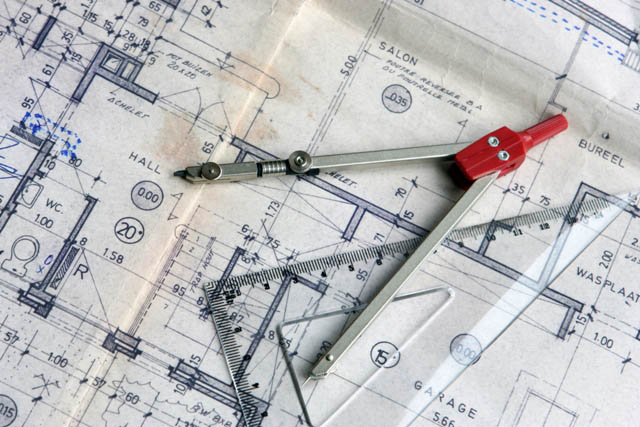By Lori Kappel, Project Designer (LaGrange, IL) and Amanda Watson, Marketing Director (Portage, IN)
For decades, Holladay Properties has been focused on developing large scale business parks and commercial buildings. Recently, we’ve gone back to our roots and have been developing projects with heavy multi-family residential components. Residential developments are so different from other commercial real estate projects, we decided to share some of our insights into the planning and design process in this post.
In commercial design, the goal is to help the user define itself through the space. The interior should represent the products, values or services offered by business, restaurant or office occupying the space. Generally when working with a commercial space, you are working and planning with the end-user and you can select finishes and fixtures that appeal to them specifically. Assuming the target market in a multi-family project will vary, or could evolve, there is value in selecting finishes and fixtures that are timeless and transitional. This will allow the end-user to add their finishing touches to a conservative “canvas” and make the space their own.
Every project we’ve done is different, from one industrial building to another, and from one multi-family building to another. In our recent projects of Burlington Station and the Promenade at Founders Square, there were major differences. Burlington Station was an 89-unit luxury residential building in a popular suburb of Chicago. We had to plan and design for residents specific to that market, which included some higher-end furnishing and extra amenity spaces. For the larger Promenade at Founders Square development, retail spaces were integrated along with the residential spaces, and we had to ensure parking requirements could be met if the retail tenant was a restaurant, or an occupancy classification requiring a larger quantity of spaces, which posed a significant hardship.
These projects were a lot of fun because we were not just designing someone’s residence in multi-family project. Several of these types of projects involve common amenity areas which allows a designer the opportunity to design different “mini-projects” along with units — all under the umbrella of one project.
With both of these projects, the project team learned valuable lessons about hiring outside resources, too. For residential architects, it’s important to see examples of drawings for similar project types they’ve completed, and learn how they coordinate with MEP consultants. Verify their experience and schedule and what kind of challenges they foresee on a potential project. As a project progresses, you may need an updated CAD file to reference or use for in-house purposes and you’ll need to understand the software the architect will use for the project and ensure there will be no additional fees for sharing files as needed.
A lot of these recommendations are similar when you’re looking for a residential contractor. Learn about other projects they’ve completed, as well as those that they have planned in the future. Make sure they have plenty of resources to complete a potential project on time, and eliminate concern about a different project impacting yours.
When planning for multi-family, there are many things that people want today that may be unexpected or seem unusual. Fast wifi or reliable connectivity is a must, and it would be wise to future-proof the building(s) for the ever-changing and quickly-evolving smart technology. A large package room with an efficient managing system is a must, and your community should be able to accommodate residents who work from home, so consider integrating spaces you’d find in an office setting into your amenity spaces, such as a conference room.
If you have the opportunity, learn about the day-to-day responsibilities of the Leasing Staff. Gaining insight into how they interact with their residents, guests and vendors will make it easier to program for the leasing office. It’s also important to understand the long-term implications of products that are specified in the drawings and to consider the financial and maintenance commitments that are required to sustain a building system or FFE item.
Finally, stay organized, and you can never get too far ahead during the construction process. If you know of an upcoming task, knock it out if you have the time. Chances are, something unexpected will pop up and add to your ever-changing and ever-growing to-do list!

